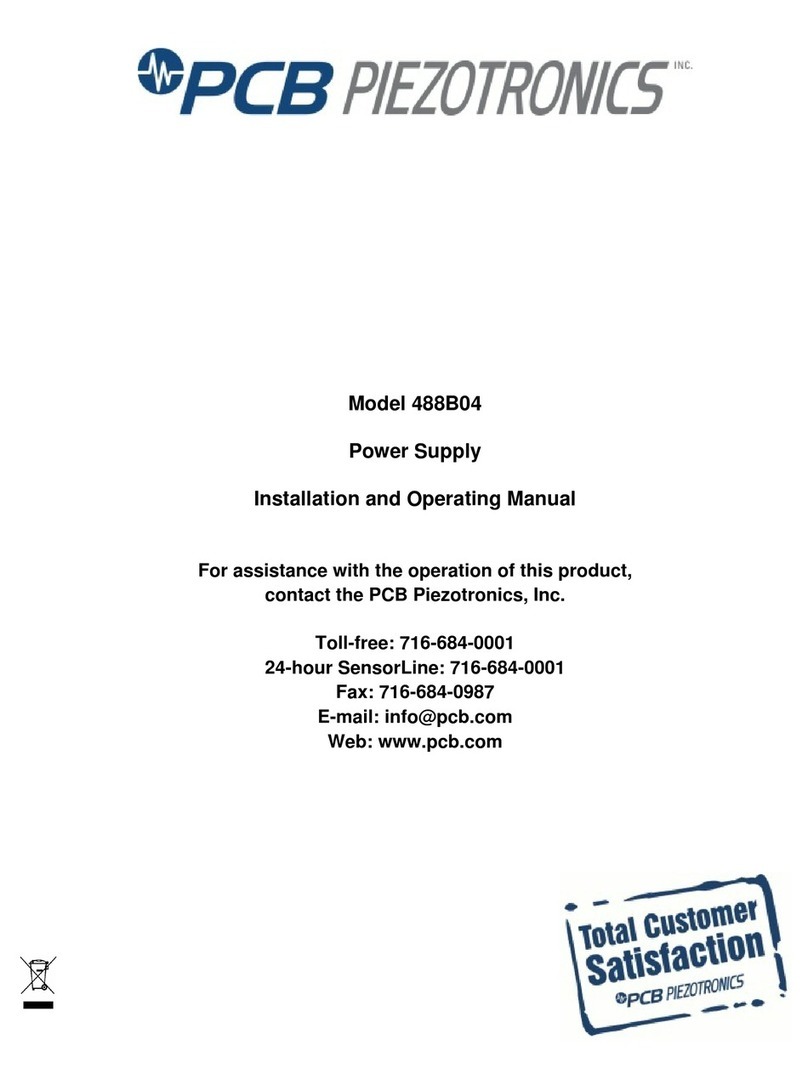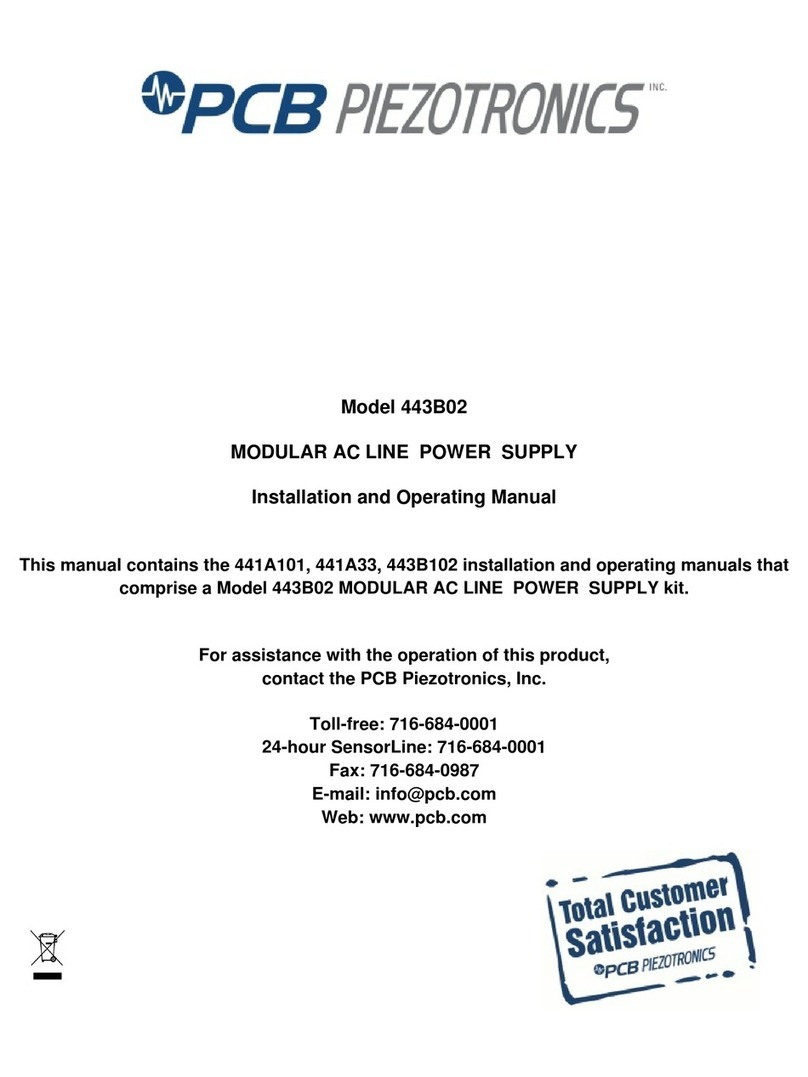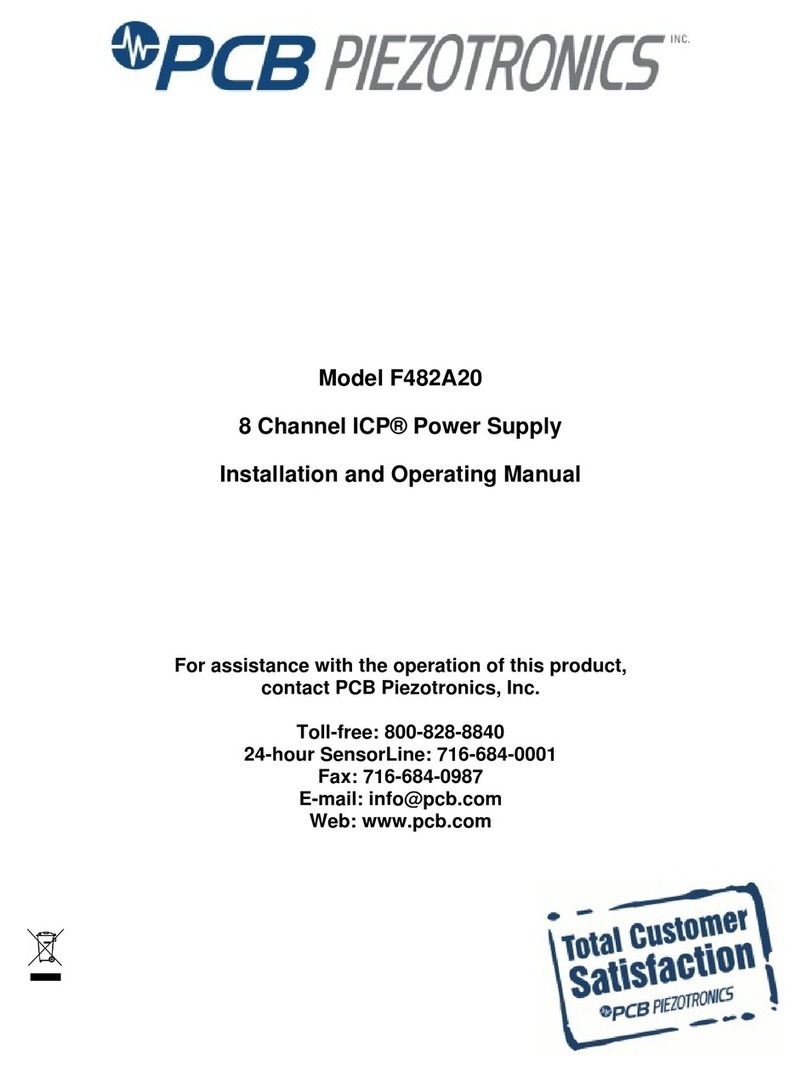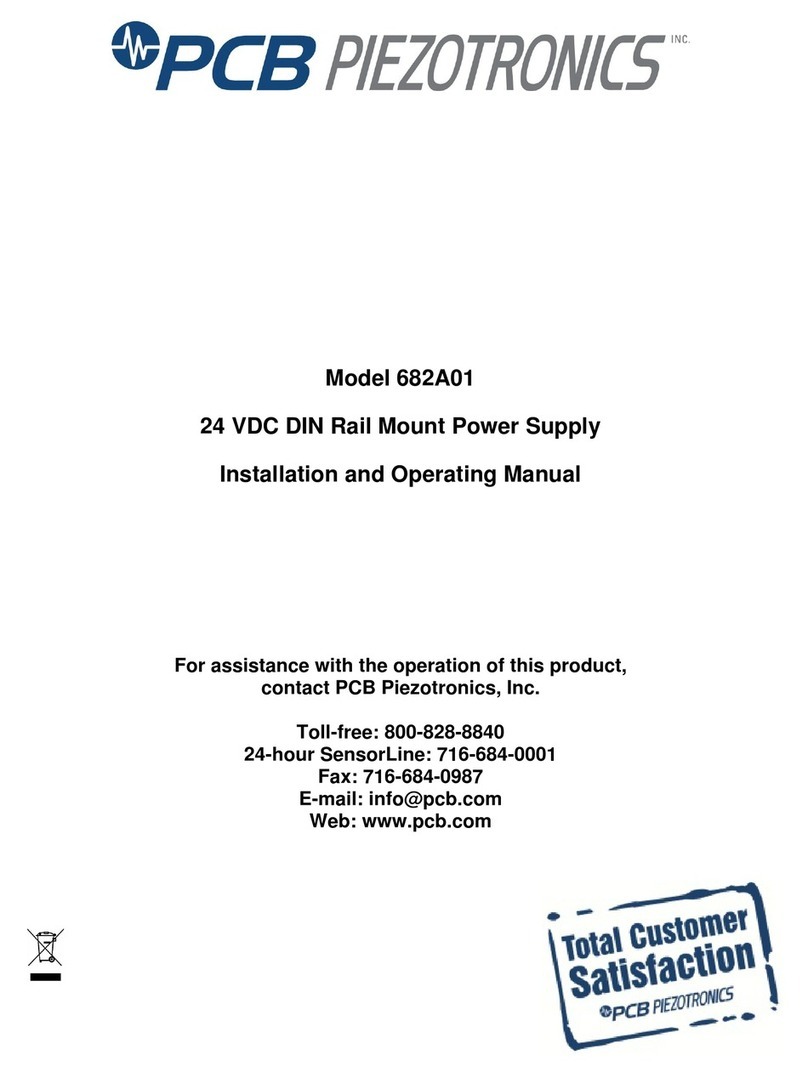
MODEL 8120 DIGITAL INDICATOR OPTION OPERATION MANUAL
5
4.0 BLOCK DIAGRAM DESCRIPTION
The purpose of this section is to explain how the
Digital Indicator works by using a simplified block
diagram. This section is not intended to provide a
detailed explanation of electronic circuits for
personnel untrained in electronic technology.
However, it provides an adequate overview of
operation for those familiar with basic electronic
circuit operation. Throughout the following, refer
to Figure 5.
Power Supplies
The integrated-circuit chips which comprise the
A/D Converter and the Overrange Comparator are
CMOS circuits which require ±9 volts regulated.
These voltages are supplied from power supplies
contained on the Signal Conditioner circuit board
and are discussed in the Signal Conditioner
Instruction Manual.
The digital part of the A/D Converter, the Bit
Selector, and the various logic gates and inverters
are operated from +5 volts regulated (TTL logic).
The +5 volt supply consists of a three-terminal
Regulator. The unregulated input to the Regulator
is obtained from Signal Conditioner circuit board
(unregulated side of +9 volt supply).
The BCD-to-7-Segment, Decoder, Display Drivers,
and Display LED’s operate from +6 volts
unregulated. Five volts ac is supplied from the
Signal Conditioner circuit board (secondary of
power transformer located on board). Plus 6 volts
unregulated is developed with a Diode Bridge and
Filter located on the Digital Indicator board.
A +2.5 volts precision reference is supplied from a
precision power supply located on the Signal
Conditioner circuit board. This reference is used in
the A/D Converter for digitizing the analog input
signal.
A/D Converter
The A/D Converter is a dual-slope converter which
digitizes the analog input signal using a ratiometric
integrating technique. The analog signal input, a
reference input, and a clock input are applied to the
converter. The measurement cycle is divided into
an Auto-Zero cycle, a Signal Integrate cycle, and a
Reference Integrate cycle. Each cycle has a time
base in which a certain amount of clock pulses
occur. The clock used is a 100-kHz crystal
oscillator. The Auto-Zero cycle is used to bring the
output of the integrator to zero and lasts 10,000
counts. The next cycle is the Signal Integrate cycle
which also lasts 10,000 counts. If the analog input
is zero at the start of the Signal Integrate cycle, the
integrator will see the same voltage that existed in
the previous state. Thus, the integrator output will
not change but will remain stationary during the
entire Signal Integrate cycle. If the analog input is
not equal to zero, an unbalanced condition exists
compared to the Auto-Zero cycle and the integrator
will generate a ramp whose slope is proportional to
the analog input. At the end of this cycle, the sign
of the ramp is determined. If the input signal was
positive, a voltage which is VREF more negative
than during Auto-Zero is applied to the integrator
input. The A/D Converter chip generates the
equivalent of a +Reference or –Reference from the
single +Reference applied. The reference voltage
returns the output of the integrator to zero. The
time, or number of counts, required to do this is
proportional to the input voltage. The Reference
Integrate cycle can be a maximum of 20,000 counts.
The full measurement cycle is then a maximum of
40,000 counts, with the answer to the measurement
being achieved when the reference voltage returns
the integrator output to zero. The full measurement
cycle is shown in Figure 4.
The DIGIT DRIVES are positive-going signals that
last for 200 clock pulses (see Figure 4). The scan
sequence is D5 (MSD), D4, D3, D2, and D1 (last
active digit). The scan is continuous unless an
overrange occurs. Then all DIGIT DRIVES are
blanked from the end of the first scan until the
beginning of the Reference Integrate cycle when D5
will start the scan again. This gives a blinking or
flashing display as a visual indication of overrange.
Because the Digital Indicator has 5000 and 10000
ranges as well as a 20000 range, an analog
Overrange Comparator is used as well as the
inherent overrange capability of the A/D Converter.


































